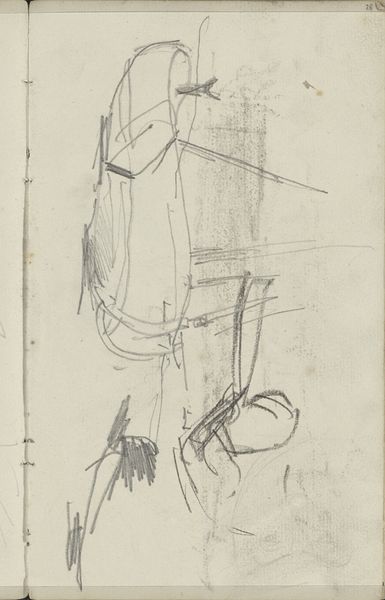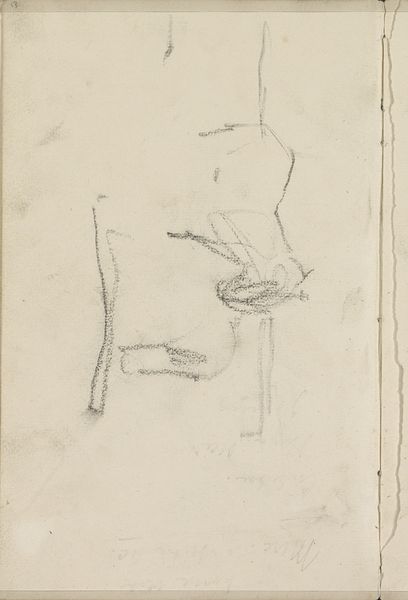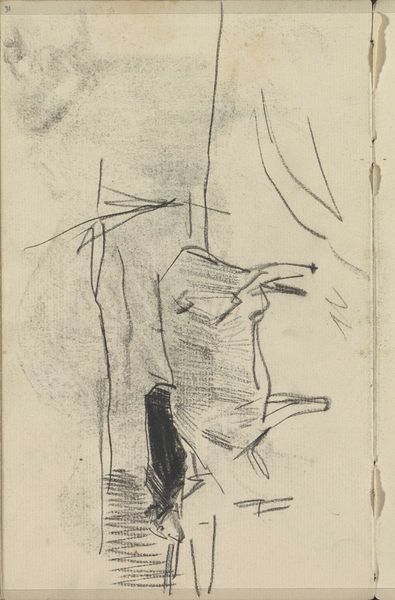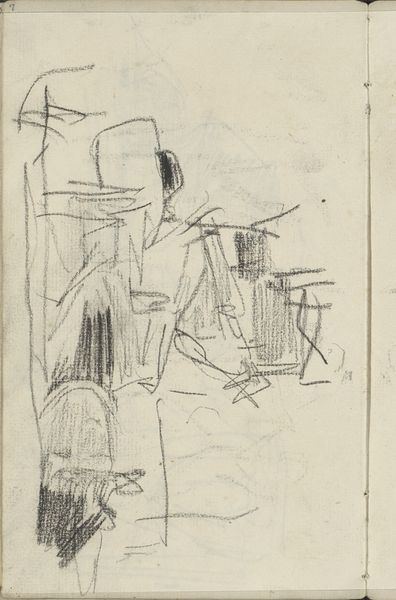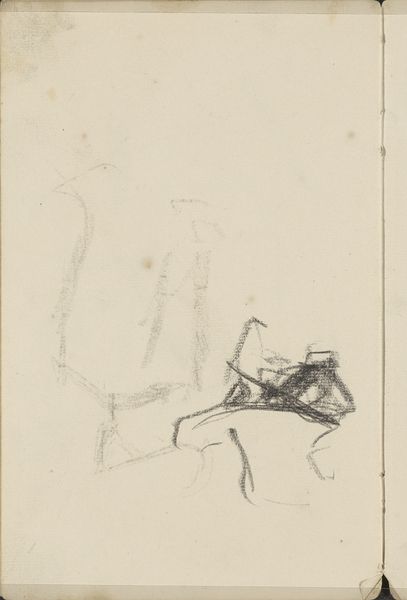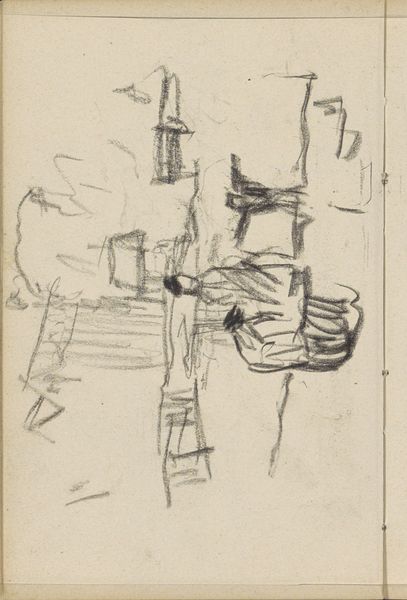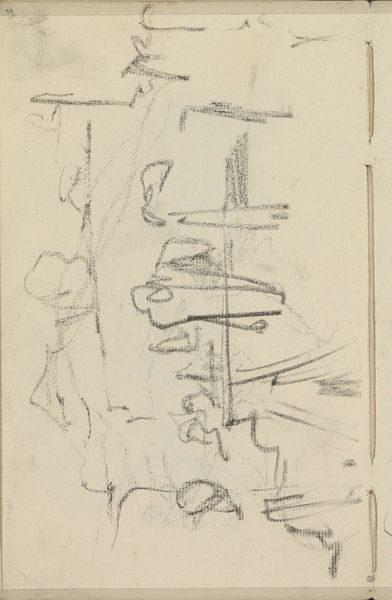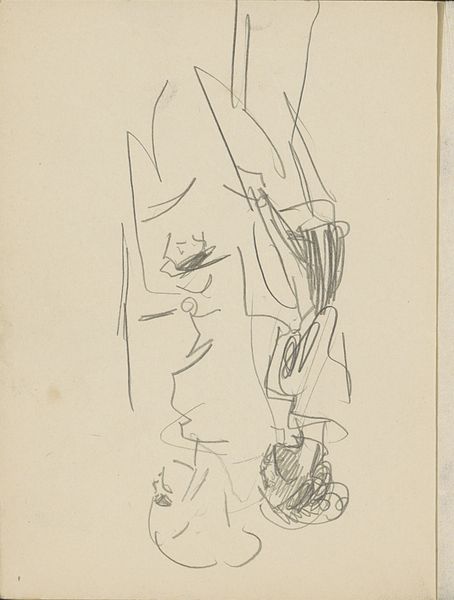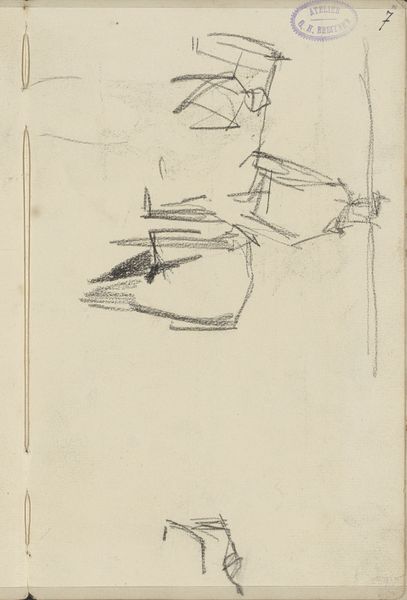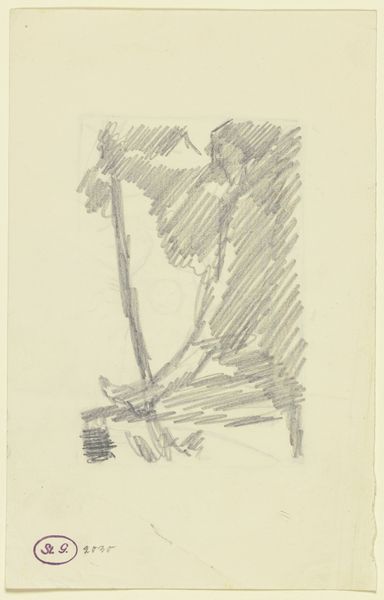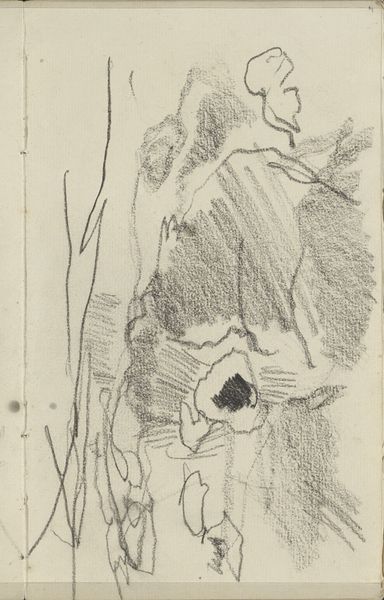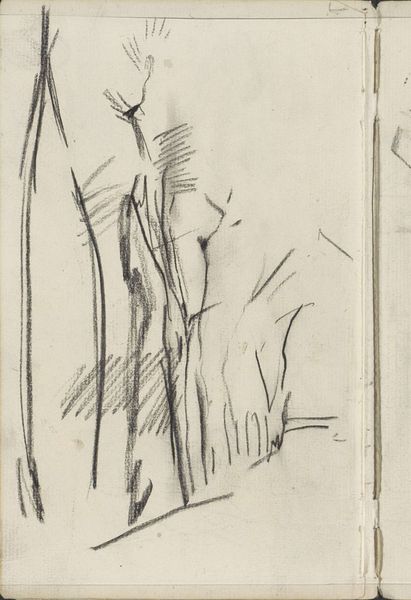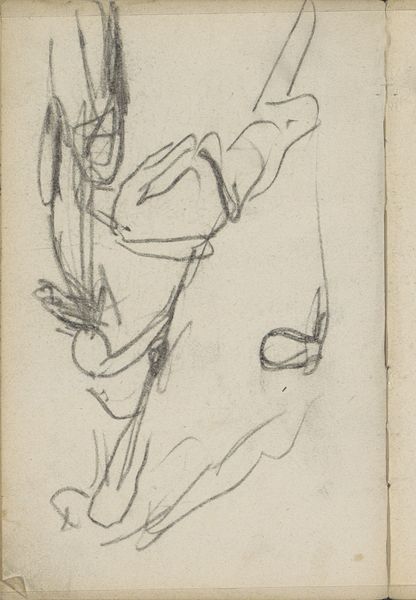
Copyright: Rijks Museum: Open Domain
Curator: Immediately striking; I see movement, energy in the sketched lines. Editor: Indeed, Breitner's “Vrouw met hoed,” created sometime between 1886 and 1923, possesses a raw immediacy. The graphite and pencil strokes, almost frenetic, hint at a rapidly captured moment. Curator: Note how the line work reveals a quick process. This piece is likely a study and a fragment in time of capturing labor or leisure of everyday urban life. It makes me consider the accessibility of artmaking to artists within those decades. Editor: Agreed. But let's consider further whose everyday lives are depicted, or rather, valorized. The woman in the hat suggests access, privilege—particularly if we juxtapose it against the sociopolitical status of working-class women. How is Breitner choosing to portray the intersection of class and representation here? Curator: Well, in a basic sense, the hat indicates a skilled maker. Its presence is proof of someone's specialized labour; of industry around adornment and craft, in service of the sitter or consumer. Even in the lack of detail here, Breitner still includes its existence as part of this composition. Editor: But what does it signal socially? Headwear, particularly during that time, reinforced social stratifications and assumptions around gender. This woman might occupy a space between a symbol and a human. The almost ghost-like qualities might point to a deeper commentary regarding identity, gender and place during that period. Curator: Yes. We might think about fashion as material and production. It makes me wonder if there are other fashion studies from the era, with notations or sketches from pattern makers in their studios, maybe pieces that reflect an effort towards material transformation as work. I would be curious to see. Editor: I’m left questioning Breitner's intent here and what his motivations were, as a white man portraying this individual and the potential issues embedded there. As this is exhibited at the Rijksmuseum, I can see there are avenues to use its visual and historical cues to open constructive dialogue in art and beyond. Curator: For me, it's the line itself. It asks questions around what labour and production exist even in early impressionism, as a social artifact beyond what seems on the surface to be the study of light and form. Editor: And for me, its ghostly, spectral qualities ask who inhabits, and has access to, those forms, light and beyond.
Comments
No comments
Be the first to comment and join the conversation on the ultimate creative platform.
